Introduction
The volatile political landscape in the Russian Federation is a phenomenon inherited from its post-Soviet experience, which continues to dictate the current actions of the state. Consequentially, this particular political background also contributed to the rejuvenation of civic and organisational life in the Russian Federation. Though civil society stagnated during the Soviet period, from the early 1990s, a variety of civil society institutions were established: these organisations were fueled by transnational financing and concentrated on social issues, ranging from humanitarian assistance to wildlife relief. External funding not only prescribed which organisation’s projects were significant but were also indicative of what types of Non-Governmental Organisation (NGO) work were deemed significant 1. These developments, particularly connections to foreign financing, were scrutinized by the Russian government which has increasingly monitored NGO activities over the last decade. With the advent of “foreign agent” legislation, passed in 2012, NGOs were frequently and systematically labelled ‘foreign agents’ if they received external funding, particularly if they were involved in politics or activism. The political segregation of ‘legitimate’ and ‘illegitimate’ civil society was enforced by the Russian State. This political manoeuvre formalised the legislative oversight of Russian civil society and is linked to the authoritarian propensities of Russia 2. The recent extensive scrutiny of civil society institutions is often credited to Russia’s political elite and the apprehension caused by the ‘colour revolutions’ in Eastern Europe and potential reactions over the Russian concept of “sovereign democracy”3. In order to fully understand the contemporary problems facing Russian civil society, one must evaluate the historical development of civil society and the enormous impact of Russia’s post–Soviet experience on the re-emergence of civil society institutions in the modern-day Russian Federation.
This analysis examines the gradual transformation of civil society in Russia. It investigates the specific impact of fundamental socio-political norms that were established during the Soviet and post-Soviet periods and continue to influence civil society organizations in modern-day Russia. Moreover, this paper shows that the political environment in the Russian Federation has dynamically transformed, and continues to transform, its influence on contemporary civil society institutions. The paper argues that much like the relative conceptualization of democracy in Russia 4 and the condition of market-based institutions5 there was a gradual resurgence or recreation of a specifically Russian iteration of civil society. In order to understand these precise circumstances, I review the development of civil society in Imperial, Soviet and post-Soviet Russia, particularly its historical development, its networks, and its partially symbiotic, yet always dependent, relationship with the state.
The Concept of Civil Society
Civil society is often referred to as the “third sector” of any given society. Modern societies generally comprise the state or government (the first sector), the market and corporations (the second sector), and civil society. Each sector plays an important role and completes an essential function. For instance, the state’s function is to maintain order and fulfil administrative tasks, which in turn guarantees the sustenance of its authority. The market’s function is to maintain economic prosperity and fulfil consumer needs, which in turn guarantees profits and return on investment back to the businesses involved. Civil society’s function, however, is slightly different: it is to monitor both of these sectors and their actions, while also rallying support to improve the lives of individuals living within a given society.
Though there are multiple definitions and understandings of civil society, most scholars agree that as fundamental concept, ‘a civil society is the sum of institutions, organizations, and individuals located between the family, the state, and the market, in which people associate voluntarily to advance common interests’ (p. 9) 6. Henceforth, I refer to civil society as an agency of solidarity and strength that upholds the essence of democracy, while acting as a ‘counterweight to the state’ (p.39) 7. This specific meaning demonstrates the intermediary nature of civil society and includes ‘voluntary – autonomous – informal/formal associations’ as ‘third sector organizations’ (TSOs).
Civil Society in Russia
In 18th century Imperial Russia, a crude form of civil society began to take form. The early instances of civil society action can be traced to Catherine the Great’s ‘sosloviya’ (the Russian estates) reforms. These reforms led to the establishment of public institutions established for the exploration and funding of charitable initiatives, science, leisure activities, the fine arts, and literature. As a result, several popular and notable associations were formed such as the Moscow Agricultural Society, the Russia Technical Society, and the Free Economics Society8. This trend, however, did not last and was engulfed by an intrusive government and largely incompetent bureaucracy.
During the early 20th century, Imperial Russia was not perceived as an inclusive society of “joiners” by other nations in Europe. There were, however, around 10,000 voluntary associations in 1914. Furthermore, several State ordained private associations also entered into the public sphere with diverse ambitions and unique projects. These private and voluntary societies flourished in large urban cities like Moscow and St. Petersburg, but also in small towns and provincial districts. They included, but were not limited to, recreational clubs, sports societies, intellectual societies, charitable and agricultural societies. Until 1914, Russia fostered the largest community of cooperatives and associations in the world9.
The latter half of the 19th century saw a meteoric rise in associations that reflected Russia’s rapid economic, cultural and social transformation. Though the Imperial government was unable to keep up with the expansion of associations, their growth was the result of state encouragement9. Associations and societies allowed Russian citizens to organise informally, collaborate on projects, and take initiative in solving social problems. While this particular form of a primordial civil society empowered Russians, it was antithetical to a political culture that was founded on personalised autocracy.
It is the clear intention of civil society to be distinct from the state and the market in which it exists. This in turn makes civil society unique in its existence and is one of the defining characteristics of its functions. Even though both civil society and the government work together, and their purposes even overlap in some instances, the sole ambition of civil society is to function outside of governmental influence. This independence allows civil society to serve the common interests of individuals and ensure human rights regulations are observed. Civil society also acts as an intermediary between organizations and the state to ensure efficient communication on issues that might otherwise be ignored. Considering the current authoritarian leanings of the Russian government, the relationship between the state and civil society organizations in the Russian Federation is volatile. Putin’s centralisation and extension of executive power, as well as the administration’s general suspicion of outside intervention (or interference), means that NGOs that work on or defend human rights are perceived as a threat. Authorities generally respond to social movements, protests and human rights demonstrations very harshly, usually through force and repressive legislation. There is a general trend of governmental hegemony over the philanthropic sector, which calls the possibility of Russia’s compatibility with a liberal and open civil society into question.
Civil Society during Soviet Russia
In order to properly understand the intricate socio-political influence of post-Soviet Russia on civil society arrangements, it is critical to recognise the context of the Soviet period. One of the major characteristics of the Soviet government was that the state closely regulated and controlled all political, social, and economic activity. Thus, the ruling Communist Party was able to subdue any formal associations that may form autonomously or mass-movements that questioned the authority of the Party-State10. Strict control demanded and created “good Communist citizens,” and a compliant population of individuals outside of the official Party establishment11. Though informal associations did exist, particularly related to cultural activities in the form of amateur clubs, their very and continued existence was completely dependent on the State in contrast to their Western counterparts (Werneke, 2019; Golubev, 2020)12. In the Soviet Union, TSO’s existed as official organizations that were defined by the state as ‘an intricately organized series of state-controlled organizations’ (p.293)10. These government-organised TSOs were spaces for public participation and activism with the objective of providing services to citizens. Services offered were often based not on citizens’ needs, but according to their relative contributions to the Communist government13. Moreover, the leadership in these TSO eventually formed the political elite of the Soviet Union or nomenklatura. The Soviet government integrated several vertical power structures one of which hegemonised public dialogue of TSOs and straitened collective action14. Rather than a watchdog for the people, nomenklatura organisations and ‘contact groups’ were used by the Soviet government to informally monitor society, instituting social control mechanisms designed to sustain the state’s stability and establish a ‘pseudo civil society’ that had no intrinsic meaning or function (p. 957-958)15. Several small-scale networks were, however, able to achieve some level of autonomy which allowed them to protect members from the Soviet regime through personal connections16.
The government’s grip on civil society arrangements and institutionalised regulation of associations did not stop small, ostensibly illegal networks on an incredible scale. These independent associations, movements, and organisations were established around intelligentsia groups, individuals who shared a ‘rebellious, opposition-minded approach shared exclusive closed mutual circles’ (p. 57)17. Individuals depended on informal networks of family members and friends for the acquisition of speciality goods or to avoid potential issues from the Communist government18. Informal ‘contact groups’ facilitated individuals’ ability to mitigate the regime’s incompetence in providing basic consumer goods19. Not only did this culture motivate ‘circles of intimacy and trust among family members and close friends’ (p.47)11, but allowed Soviet citizens to adapt to the shortcomings of the regime. They also allowed an intrinsic civil society to co-exist within the official, institutionalised version prompted by the regime and provided the foundation for civil society after the collapse of the USSR.
Perestroika and Civil Society
Perestroika, initiated by Mikhail Gorbachev, began in 1985 and aimed at democratising and liberalising the Communist establishment through the implementation of various reforms and policy changes20. Gorbachev’s reorientation of society resulted in several institutions and independent organisations and the emergence of alternative political parties within the one-party state. Though several associations and organisations were permitted to exist at the time, they lacked legal and political legitimacy or authority21.
Social movements and the re-emergence of voluntary associations were hallmarks of Perestroika, but an independent and autonomous civil society did not materialize. Western scholars expected an accelerated institutionalisation of civil society after the fall of the USSR, which would hasten the foundations of democratisation and freedom. Nevertheless, the political space required for an autonomous civil society to function within the public sphere was not present prior to the dissolution of the Soviet Union.
The conventional monolithic ways of governance in the Soviet period were, to some extent, eradicated under Gorbachev. Despite this transformation and the political upset caused by the collapse, post-Soviet Russia did not undergo genuine democratisation. While the relationship between the state and society fundamentally changed, these developments did not herald an abundance of civil society institutions. The Russian Federation’s pseudo-democratic politics means that informal ways of social action continue. While this socio-political setting did not encourage the establishment of a conventional civil society recognised by the West, it did contribute to the formation of an emerging alternative civil society.
Factors Influencing Post-Soviet Civil Society
Several social movements sprang up during Perestroika but soon after the collapse of the USSR, democratisation divided these initiatives into various single-issue movements. While many of these groups lacked coordination or focus, people did not associate themselves with these sub-movements. For instance, the environmental movement was a pivotal player in the fall of the Soviet Union. Soon after the collapse, however, the environmental movement fragmented and lost its collective identity and agenda22. Social movements deteriorated into regional and local organisations. This separation disturbed the essence which was present previously as a single social movement: the separate and divided associations lacked public appeal and determination. As a result, TSOs were not interested in the betterment of the wider population and were more focused on furthering their own economic and political agendas. Ideally, the function of TSOs after the fall of the Soviet Union would have concentrated on bridging the gap between the state and society. Similar to civil society in the Soviet period, however, the TSOs did not intend a holistic approach to social action17.
There was a clear disconnect between the TSOs and the general population. Prior to the collapse, the Soviet regime coerced participation in social associations and institutions eliminated the notion of ‘volunteerism’. Russian citizens were simply not accustomed to taking initiative in the public sphere. As a result, there was limited public support for TSOs in general23. For instance, in the USSR, trade unions were functional under the state’s control. While these unions were vital in mobilising the general masses, they still identified as state organisations24. For that reason, post-Soviet trade unions were unable to garner mass interest. TSOs were unable to act as intermediaries between Russian citizens and the state due to deficient public support which is fundamental for TSOs present in democratic settings. Therefore, the notion of civil society acting as the ‘middle ground’ was constrained and limited democratisation in post-Soviet Russia.
Finally, TSOs were exclusive and hostile to members interested in joining. According to Mendelson & Gerber (2007), human rights institutions have observed this pattern in Russian TSOs, which constrict outsider involvement and are unwilling to engage the public in their projects. The primary reason for this attitude can be traced to TSOs in the Soviet period, when they existed to protect their members from the state rather than serve society more broadly22. Over the years, TSO’s solidified this exclusive identity, which, in essence, hampers the development of a democratic civil society.
The development of civil society in post-Soviet Russia is obstructed by these three factors. The constant weakness of Russia’s civil society structure is inherited from Soviet-era policy, the fragmentation of social movements and the nature of Russian TSOs themselves. The inability to understand the general requirements of the population, and unite citizens behind nonpolitical social issues, has systematically damaged the function of contemporary civil society. While the introduction of foreign TSOs and resources allow local and regional organisations to act as intermediaries between the state and Russian citizens, strict government policies and regulations have also limited foreign influence.
Future Prospects of Civil Society in Russia
Russia’s struggle to establish a strong civil society from within has been a challenge since the first vestiges appeared in Imperial Russia. Some corporations and wealthy individuals have funded NGOs encouraging Russians to actively indulge in philanthropic initiatives to further strengthen civil society institutions. There are, however, several restrictions in place to obstruct foreign funding to NGOs. The infamous ‘foreign agents’ law, adopted in 2012, requires any NGO that receives foreign funding to register with the Ministry of Justice, and thus are subject to increased surveillance, administrative burdens and fines, which often lead to dissolution25. The ‘foreign agents’ law is regularly used by the authorities as a method of criminalising the work of human rights defenders, which is evident not only in the restriction of NGOs but also increasingly indicative of restrictive legislation targeting freedom of speech and assembly. The simple act of participating in an unauthorised rally or picket could lead to criminal prosecution.
Looking to the future, barring some unforeseen change and given the events of the last twenty years, it seems the response of authorities will become harsher as time progresses. But this may be a positive development for the mobilisation of civil society in Russia because it indicates that participatory interest is much stronger than it was previously. Overall, more people are becoming ‘joiners’, and more young people are engaged. While this generates a harsher response from authorities and more draconian legislation to restrict their activities, social movements under the banner of civil society will likely gain momentum. The question that remains, however, is whether non-political issues addressed by civil society organisations will be able to galvanise this type of support: According to an article published in The Moscow Times26, 28% of Russians voiced their willingness to be a part of a protest over poor government policies and declining quality of life. Given the Russian government’s failure to accommodate the needs of its citizens, civil society organisations have opportunities to act and promote change through demonstrations and civil dialogue.
Yet, the information available is contradictory. Levada’s pollster recently confirmed that half of the Russian citizens polled either do not trust anyone or are unsure who to trust. While this particular poll also marked the lowest approval and trust rating for current Russian president Vladimir Putin (reversing trends in political ambivalence), lack of faith or uncertainty over which organisations to trust could hinder the further development of civil society27.
Conclusion
The Imperial and Soviet legacies have shaped the post-Soviet Russian Federation in numerous ways. This analysis demonstrates that the Russian iteration of civil society has been influenced by practices prevalent during the Soviet era which encouraged TSOs to depend on the state for resources. Moreover, that article shows that historically, Russian civil society has not conformed to conventional models of civil society arrangements, which leads to an uncertain future. Given the rise of stricter governmental policies, however, distrust amongst citizens could potentially equip civil society arrangements with the ability to act and make their voices heard.
Alternatively, lack of trust could be interpreted as an indicator that civil society institutions in the Russian Federation will continue to operate as they have since the collapse of the USSR. Even though civil society in Russia is closely regulated and controlled, there is still room for development in the form of adaptation to Russian particularities. At the moment, Russian civil society is not dead but instead seeks to broaden its horizons and contextually arrange itself in alignment with Russia’s current political vertical power structure.
Sources Anheier, Helmut K. Nonprofit organizations: Theory, management, policy. Routledge, 2014. Bradley, Joseph. Voluntary associations in tsarist Russia: Science, patriotism, and civil society. Harvard University Press, 2009. Crotty, Jo. “Making a difference? NGOs and civil society development in Russia.” Europe-Asia Studies 61, no. 1 (2009): 85-108. Evans Jr, Alfred B., Alfred B. Evans, Laura A. Henry, and Lisa McIntosh Sundstrom. Russian civil society: A critical assessment. Me Sharpe, 2006. Fish, Steven. “The emergence of independent associations and the transformation of Russian political society.” Journal of communist studies 7, no. 3 (1991): 299-334. Foley, Michael W., and Bob Edwards. “The paradox of civil society.” Journal of democracy 7, no. 3 (1996): 38-52. Gel’man, Vladimir, and Sergei Ryzhenkov. “Local regimes, sub-national governance and the‘power vertical’in contemporary Russia.” Europe-Asia Studies 63, no. 3 (2011): 449-465. Golubev, Alexey. The Things of Life: Materiality in Late Soviet Russia. Cornell UniversityPress, 2020. Hanson, Philip, and Elizabeth Teague. “Big business and the state 306 in Russia.” Europe-Asia Studies 57, no. 5 (2005): 657-680. Howard, Marc Morjé. “Postcommunist civil society in comparative perspective.” Demokratizatsiya 10, no. 3 (2002): 285-305. https://www.themoscowtimes.com/2020/06/01/putins-trust-rating-drops-further-as-morerussians-willing-to-protest-poll-a70440 Kharkhordin, Oleg. “Civil society and orthodox Christianity.” Europe-Asia Studies 50, no. 6(1998): 949-968. Kubik, Jan. “How to study civil society: the state of the art and what to do next.” East European Politics and Societies 19, no. 1 (2005): 105-120. Ledeneva, Alena C., and Alena V. Ledeneva. Russia’s economy of favours: Blat, networking and informal exchange. Vol. 102. Cambridge University Press, 1998. Machalek, K. Fact Sheet. From Russia NGO Laws: https://freedomhouse.org/sites/default/files/Fact%20Sheet_0.pdf, 2013. Matthews, Mervyn. Privilege in the Soviet union: a study of elite life-styles under communism.Routledge, 2011. Mendelson, Sarah E., and Theodore P. Gerber. “Activist culture 329 and transnational diffusion: Social marketing and human rights groups in Russia.” Post-Soviet Affairs 23, no. 1 (2007): 50-75. Richter, James, and Kristen Ghodsee. “Introduction: The State in Putin’s Russia.” Problems of Post-Communism 56, no. 6 (2009): 3-6. Rose, Richard. “Russia as an hour-glass society: A constitution without citizens.” E. Eur.Const. Rev. 4 (1995): 34. Smolar, Aleksander. “Civil society after communism: From opposition to atomization.” Journal of Democracy 7, no. 1 (1996): 24-38. Stephenson, Svetlana. “Child labour in the Russian Federation.” (2002). Sundstrom, Lisa McIntosh. “Foreign assistance, international norms, and NGO development: Lessons from the Russian campaign.” International Organization (2005): 419-449. Tent, Margaret BW. Leonhard Euler and the Bernoullis: mathematicians from Basel. CRC Press, 2009. The Moscow Times. ‘Putin’s Trust Rating Drops Further as More Russians Willing to Protest – Poll’ Retrieved January 31, 2021. June 1, 2020. https://www.themoscowtimes.com/2020/06/01/putins-trust-rating-drops-further-as-more353 russians-willing-to-protest-poll-a70440 Uhlin, Anders. Post-Soviet civil society: democratization in Russia and the Baltic States. Routledge, 2006. Wegren, Stephen K., and Andrew Konitzer. “Prospects for managed democracy in Russia.” Europe-Asia Studies 59, no. 6 (2007): 1025-1047. Wengle, Susanne, and Michael Rasell. “The monetisation of l’goty: Changing patterns of welfare politics and provision in Russia.” Europe-Asia Studies 60, no. 5 (2008): 739-756. Werneke, Jessica. ““Nobody understands what is beautiful and what is not”: Governing Soviet Amateur Photography, Photography Clubs and the Journal Sovetskoe Foto.” Photography and Culture 12, no. 1 (2019): 47-68.
Footnotes
- Sundstrom, Lisa McIntosh. “Foreign assistance, international norms, and NGO development: Lessons from the Russian campaign.” International Organization (2005): 419-449. [>]
- Gel’man, Vladimir, and Sergei Ryzhenkov. “Local regimes, sub-national governance and the ‘power vertical’ in contemporary Russia.” Europe-Asia Studies 63, no. 3 (2011): 449-465. [>]
- Richter, James, and Kristen Ghodsee. “Introduction: The State in Putin’s Russia.” Problems of Post-Communism 56, no. 6 (2009): 3-6. [>]
- Wegren, Stephen K., and Andrew Konitzer. “Prospects for managed democracy in Russia.” Europe-Asia Studies 59, no. 6 (2007): 1025-1047. [>]
- Hanson, Philip, and Elizabeth Teague. “Big business and the state in Russia.” Europe-Asia Studies 57, no. 5 (2005): 657-680. [>]
- Anheier, Helmut K. Nonprofit organizations: Theory, management, policy. Routledge, 2014. [>]
- Foley, Michael W., and Bob Edwards. “The paradox of civil society.” Journal of democracy 7, no. 3 (1996): 38-52. [>]
- 8 Tent, Margaret BW. Leonhard Euler and the Bernoullis: Mathematicians from Basel. CRC Press, 2009. [>]
- Bradley, Joseph. Voluntary associations in tsarist Russia: Science, patriotism, and civil society. Harvard University Press, 2009. [>] [>]
- Howard, Marc Morjé. “Postcommunist civil society in comparative perspective.” Demokratizatsiya 10, no. 3 (2002): 285-305. [>] [>]
- Evans Jr, Alfred B., Alfred B. Evans, Laura A. Henry, and Lisa McIntosh Sundstrom. Russian civil society: A critical assessment. Me sharpe, 2006. [>] [>]
- Werneke, Jessica. ““Nobody understands what is beautiful and what is not”: Governing Soviet Amateur Photography, Photography Clubs and the Journal Sovetskoe Foto.” Photography and Culture 12, no. 1 (2019): 47-68., Golubev, Alexey. The Things of Life: Materiality in Late Soviet Russia. Cornell University Press, 2020. [>]
- Wengle, Susanne, and Michael Rasell. “The monetisation of l’goty: Changing patterns of welfare politics and provision in Russia.” Europe-Asia Studies 60, no. 5 (2008): 739-756. [>]
- Stephenson, Svetlana. “Child labour in the Russian Federation.” (2002), Evans Jr, Alfred B., Alfred B. Evans, Laura A. Henry, and Lisa McIntosh Sundstrom. Russian civil society: A critical assessment. Me sharpe, 2006. [>]
- Kharkhordin, Oleg. “Civil society and orthodox Christianity.” Europe-Asia Studies 50, no. 6 (1998): 949-968. [>]
- Matthews, Mervyn. Privilege in the Soviet union: a study of elite life-styles under communism. Routledge, 2011. [>]
- Mendelson, Sarah E., and Theodore P. Gerber. “Activist culture and transnational diffusion: Social marketing and human rights groups in Russia.” Post-Soviet Affairs 23, no. 1 (2007): 50-75. [>] [>]
- Rose, Richard. “Russia as an hour-glass society: A constitution without citizens.” E. Eur. Const. Rev. 4 (1995): 34. [>]
- Ledeneva, Alena C., and Alena V. Ledeneva. Russia’s economy of favours: Blat, networking and informal exchange. Vol. 102. Cambridge University Press, 1998. [>]
- Uhlin, Anders. Post-Soviet civil society: democratization in Russia and the Baltic States. Routledge, 2006. [>]
- Fish, Steven. “The emergence of independent associations and the transformation of Russian political society.” Journal of communist studies 7, no. 3 (1991): 299-334. [>]
- Crotty, Jo. “Making a difference? NGOs and civil society development in Russia.” Europe-Asia Studies 61, no. 1 (2009): 85-108. [>] [>]
- Smolar, Aleksander. “Civil society after communism: From opposition to atomization.” Journal of Democracy 7, no. 1 (1996): 24-38. [>]
- Kubik, Jan. “How to study civil society: the state of the art and what to do next.” East European Politics and Societies 19, no. 1 (2005): 105-120. [>]
- Machalek, K. Fact Sheet. From Russia NGO Laws: https://freedomhouse.org/sites/default/files/Fact%20Sheet_0.pdf, 2013. [>]
- The Moscow Times. ‘Putin’s Trust Rating Drops Further as More Russians Willing to Protest – Poll’ Retrieved January 31, 2021. June 1, 2020. https://www.themoscowtimes.com/2020/06/01/putins-trust-rating-drops-further-as-more russians-willingto-protest-poll-a70440 [>]
- The Moscow Times. ‘Putin’s Trust Rating Drops Further as More Russians Willing to Protest – Poll’ Retrieved January 31, 2021. June 1, 2020. https://www.themoscowtimes.com/2020/06/01/putins-trust-rating-drops-further-as-more russians-willingto-protest-poll-a70440 [>]

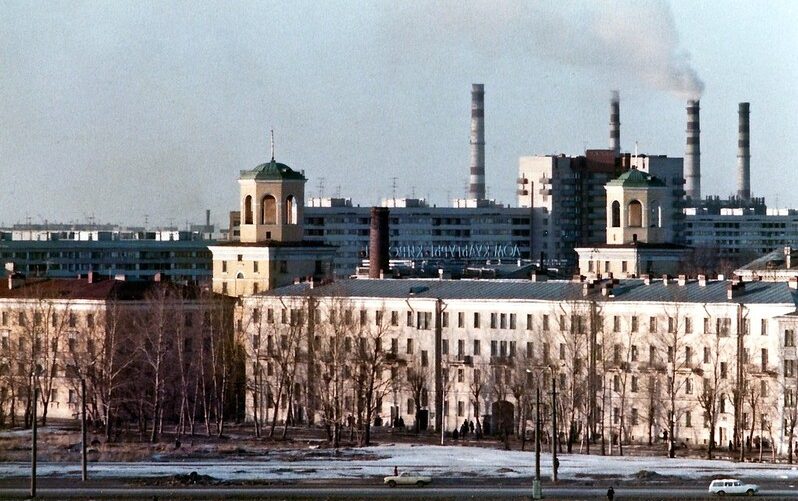
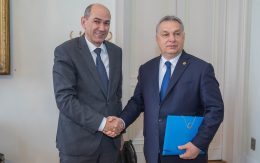
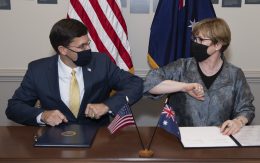
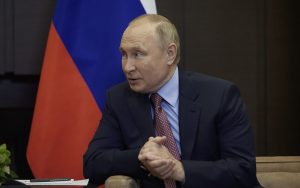

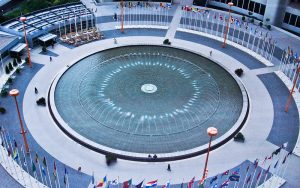


Eloquent and comprehensive. A very good read!
An apt analysis! It’s truly fascinating to learn that there is a potential for plural concepts of civil societies to exist.
Informative and a great read!